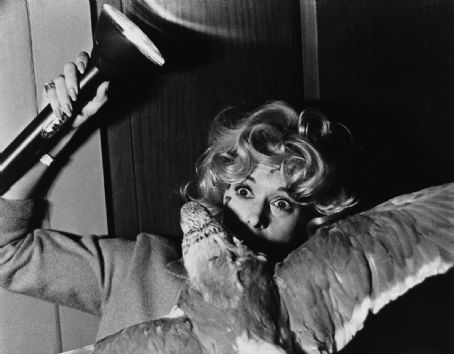 I'd like to thank Camiele White for her kind offer to create this guest post, the first on my blog. Be sure to pay Camiele a visit at Star Costumes (http://www.starcostumes.com/).
I'd like to thank Camiele White for her kind offer to create this guest post, the first on my blog. Be sure to pay Camiele a visit at Star Costumes (http://www.starcostumes.com/). It goes without saying that Alfred Hitchcock is probably the epicentre of all things cinematic. With his uncanny sense of perspective and lighting, he effectively educated the world on the simplicity of fear. What most would never even consider as shocking or frightening Hitchcock exposed as truly terrifying. In my mind, there’s no other director of suspense that has had the good sense to tackle those subjects so banal that they go unnoticed by the trained eye.
Case in point: The Birds.
Humans have always had the desire to fly as a bird, to see the world as it is above the clouds. However, with advents of planes and instant travel, there came intense waves of claustrophobia, fear of terrorism, and an unsettling feeling of being in the hands of a complete stranger with unconscionable power over a flying, metal vacuum. As with the Wright brothers, Hitchcock had the world quaking with fear. The idea of being pecked alive by the very majestic creatures we’ve learned to adore as the freest species constructed has forever niggled away at our sense of safety.
For the first time in cinematic history (well, as far as I can tell) a film pushed the boundaries of what the audience could experience. The Birds allowed the audience to experience the power of Mother Nature at her most wrathful. Those who’ve seen the film understand the implications --a society built of the caged “other” (in this case, birds, to which there is an undying fascination) becomes hell-bent on reconfiguring the balance --the prey becoming the predator, essentially. But, there’s more to the film than the obvious social commentary.
How many times have you been at a dock, a menagerie, or any other space overrun with pigeons? Do you remember being around someone who had the instinctive urge to duck or dodge anything that made a sudden movement towards them? What an interesting revelation when you find out the source of that desire to risk bodily harm to avoid a beak came from Hitchcock’s avian classic. Every subsequent generation following The Birds has had to endure a heightened sense of unease whenever around open areas populated by an alarming amount of bird life.
The senses have been recalibrated to be attuned to the sound of wings flapping, irrational squawking noises, and overhead shadows of gangland pigeons waiting to attack. Scenes like the infamous image of a man slouched in a corner dead with his eyes gouged from his head are imprinted in the human psyche and forces certain members of the so-called “intelligent race” to react like cockroaches when the lights are suddenly turned on in the kitchen: scattering and slithering atop each other just to get out of the way and find a dark hiding spot where the killer can’t find them. It’s actually pretty hilarious until you revisit the film and find it oddly difficult to step foot outside lest a swarm of predatorial doves seeking blood suddenly swoop down from their perches.
Thank you, Alfred Hitchcock. You’ve given horror, film, and the morbid corridors of the mind new fears to consider and exploit.
As unexpected as her path was to loving all things weird, more unexpected is her ability to get attention for writing about the stuff. From Japanese horror and Korean melodrama, to the acid soaked animation of the 70s, Camiele White loves to talk about, debate, and watch film that teases, pleases, and messes with the senses. Right now, she gets her jabberjaw jollies writing about Halloween costumes. If you want to give her a buzz, she can be reached at cmlewhite at gmail [dot] com.







No comments:
Post a Comment